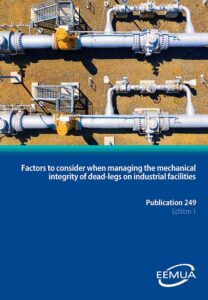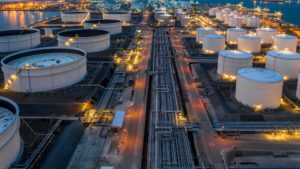Sherwin Williams has launched Heat-Flex Advanced Energy Barrier (AEB) which tackles corrosion under insulation (CUI), effectively eliminating the costly and dangerous phenomenon of steel assets corroding underneath insulation systems.
The coating replaces the bulky mineral-based insulation that’s traditionally used on storage tanks, process vessels and piping to retain process heat. By eliminating the threat of corrosion, the coating offers a solution that is less resource intensive than traditional insulating production systems. Neil Wilds, global product director, CUI/testing for Sherwin-Williams protective and marine says: ‘To occur in the first place, corrosion under insulation requires the presence of one of its namesakes – the insulation. By removing this ‘I’ from an asset and applying the thermal insulative coating in its place, there is no longer any physical system under which the ‘C’ – the corrosion – could occur. Therefore, the corrosion is eliminated by default. With Heat-Flex AEB, we’re kissing both insulation and CUI goodbye.’
Heat-Flex AEB works by building a thick film of insulative coating material onto assets that are required to maintain operating temperatures up to 350°F (177°C), with excursions to 400°F (204°C). This coating retains process heat inside coated assets, allowing them to continue operating even in extreme environments. It effectively rivals the in-service insulative capabilities of traditional insulation systems due to their tendency to absorb and trap moisture that infiltrates their exterior cladding. This moisture not only dramatically reduces the insulating capacity of the insulation, but also contributes to the acceleration of CUI.
Erik Dammen-Brower, R&D chemist II for Sherwin-Williams protective and marine adds: ‘When developing Heat-Flex AEB, we needed to ensure the coating itself could retain process heat at temperatures high enough to remove traditional insulation and not affect the consistency and flow of materials housed inside assets. Careful manipulation of the coating molecule and product formulation enabled this surprising capability, which has notable ramifications for reducing costs and improving carbon footprints, while enabling efficiencies in various facility applications.’
Beyond the comparable heat retention capabilities of Heat-Flex AEB and traditional insulation systems, the thermal insulative coating offers a variety of enhanced sustainability benefits. Using just the insulative coating eliminates the manufacturing, shipping and storage of all the materials required for a traditional system – including the mineral wool insulation, wiring, pins and banding that keeps insulation in place, and the metal cladding mounted over top. In addition, because Heat-Flex AEB eliminates CUI, steel assets will last far longer before any steel needs to be replaced, if at all, minimising the environmental costs of steel production to maintain an asset. Finally, the consistent thermal efficiency Heat-Flex AEB offers allows asset owners to maintain required operating temperatures without needing to increase process heat inside the coated asset. Owners may need to increase that heat – and therefore their environmental footprints – when using traditional insulation systems due to the inevitable moisture ingress that will occur and reduce the insulation’s effectiveness.









